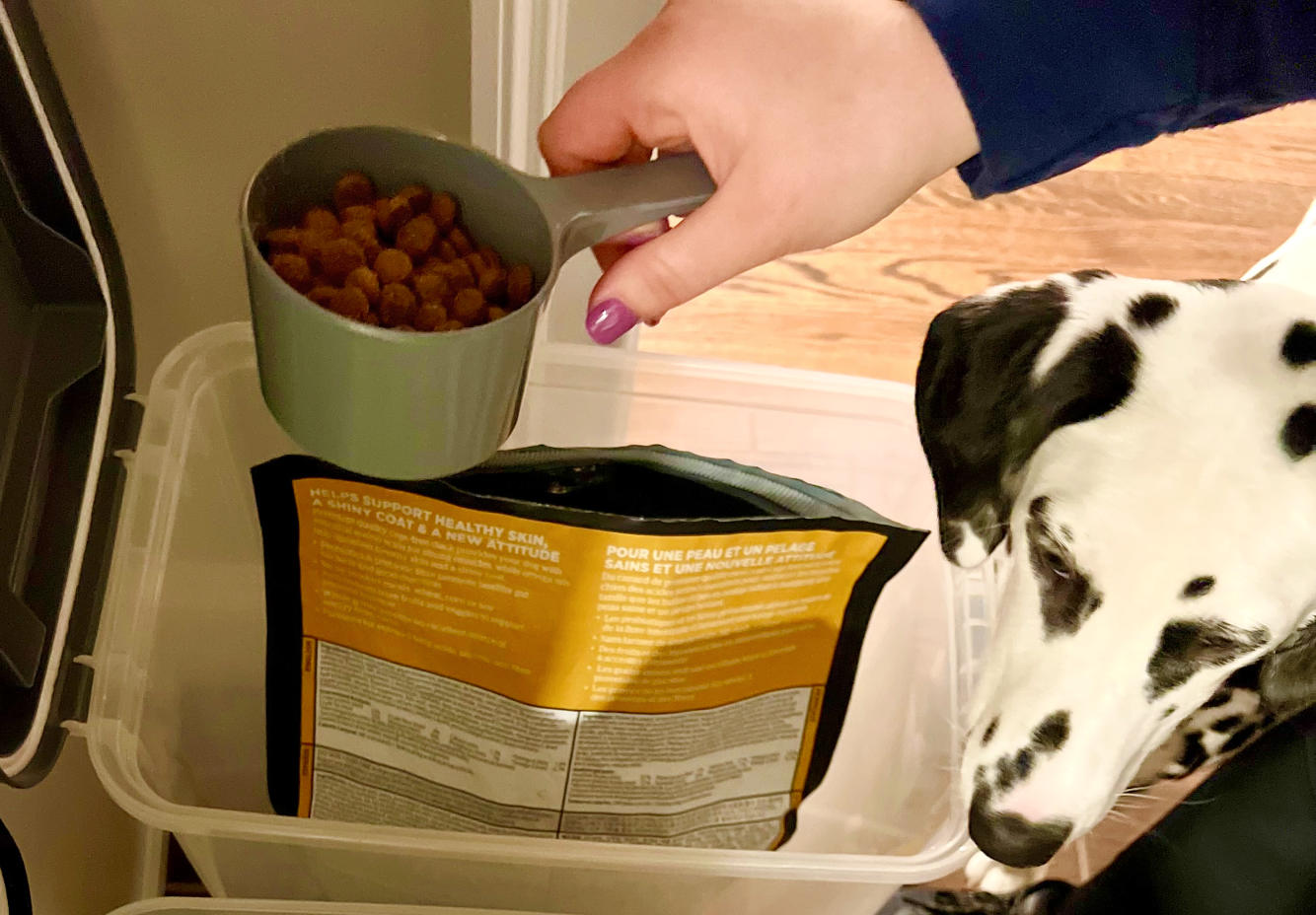Why Accurately Measuring Your Pet’s Food is Essential
One of the easiest steps we can take to better our pets’ health is to measure their food accurately. Being attentive to meal portion size is an important detail for maintaining not just our pet’s weight, but their whole body health.
Why ‘Eyeballing’ Isn’t Enough
Feeding your pet the right amount of food is crucial for their overall health and well-being. Do you feed a “handful” or a “scoop” of dry food? Do you just fill your pet’s bowl? If so, exactly how much is that “scoop” or “handful”? Is your measurement more or less than a cup?
If you’re guilty of “eyeballing” the amount of food you feed your pet, it’s important to understand why we advise against doing so.
Accurate portions at mealtime are imperative to prevent obesity – an epidemic taking years off our pets’ lives. A generous meal here or there may not have any ill effects, however over time these inaccuracies add up. Consistently overestimating food portions causes excessive daily calorie intake. Further opportunities for inaccuracy arise when assessing different kibble types. Kibble shape and size vary greatly from brand to brand, small breed to average to large breed, etc.
The Benefits of Measuring Your Pet’s Food Accurately
Using a labeled measuring cup or utensil (or a scale for raw food) ensures that your pet is getting the right amount of food they need each day. Accurate measurement is important information to have if a veterinarian or nutritionist were to assist with dietary needs.
Proper measurement also helps you keep track of their daily intake, so you can adjust their diet if necessary. This is especially important if you’re trying to maintain a healthy weight or troubleshoot digestive issues. For example, if your pet frequently has loose stools, it may be recommended to decrease the amount of food to ease digestion. However, if your measurement is a rough estimate, it’s challenging to predict if an increase or decrease would benefit your pet.
Feeding your pet the right amount of food can also save you money in the long run. By feeding an appropriate amount, you avoid overfeeding your pet and potentially wasting food.
Factors that Affect How Much Food Your Pet Needs
It’s important to note that the amount of food your pet needs may vary depending on factors such as their age, weight, activity level, and health history. The use of meal toppers, treats, recreational bones and chews also affect calorie requirements.
We believe that all pets have unique nutritional requirements. Therefore, the feeding guidelines on your pet’s bag of food may not be ideal for them.
Tips for Measuring Your Pet’s Food Effectively
Measuring your pet’s food doesn’t have to be a complicated process. For dry food (kibble), simply use a labeled measuring cup or utensil to portion out the appropriate amount of food for your pet’s size and unique nutritional needs. For a raw diet, it’s important to use an accurate kitchen food scale. Sometimes we may suggest feeding a “heaping” or “scant” measure versus a level measure. Small variances in a day may not have a major impact, but over weeks or months they can make a noticeable difference!
It’s also noteworthy to emphasize the importance of feeding appropriately sized kibble for your pet. A cup of small breed (small bites) kibble offers significantly more volume than the same measurement of a large breed kibble. In scientific terms, volume refers to the amount of space occupied by an object. If you fill a glass jar with tiny pebbles and then replace them with golf balls, the pebbles would have a greater volume because they would occupy more space in the jar. Therefore, it’s important to understand the value of appropriate (accurate) feeding measurements tailored for your pet.
What Does Science Say?
Studies show that even when kibble is measured with a measuring cup, precision feeding is challenging to achieve. Although pet food labels provide feeding guidelines in cups, nutrient values are calculated by weight. Ideally, all pet food, including dry extruded kibble, should be weighed on a kitchen food scale for the most accuracy. Using a scale enables pet owners to precisely measure dry food weights, ensuring accurate caloric intake. This is particularly beneficial for overweight pets to achieve weight loss and for lean pets to maintain optimal weight.
Proper Measurement is Key for a Healthy Pet
Measuring your pet’s food accurately is an important step in keeping them healthy and happy. By using a labeled measuring cup or scale, you can ensure that your pet is getting the right amount of food they need each day. So, let’s all commit to measuring our pets’ food and providing them with the best possible care.
*This article is for informational purposes only. It is not meant to provide medical advice or replace the advice of a qualified veterinarian.
References:
Coe JB, Rankovic A, Edwards TR, Parr JM. Dog owner’s accuracy measuring different volumes of dry dog food using three different measuring devices. Vet Rec. 2019;185(19):599. doi:10.1136/vr.105319
German AJ, Holden SL, Mason SL, et al. Imprecision when using measuring cups to weigh out extruded dry kibbled food. J Anim Physiol Anim Nutr (Berl). 2011;95(3):368-373. doi:10.1111/j.1439-0396.2010.01063.x






